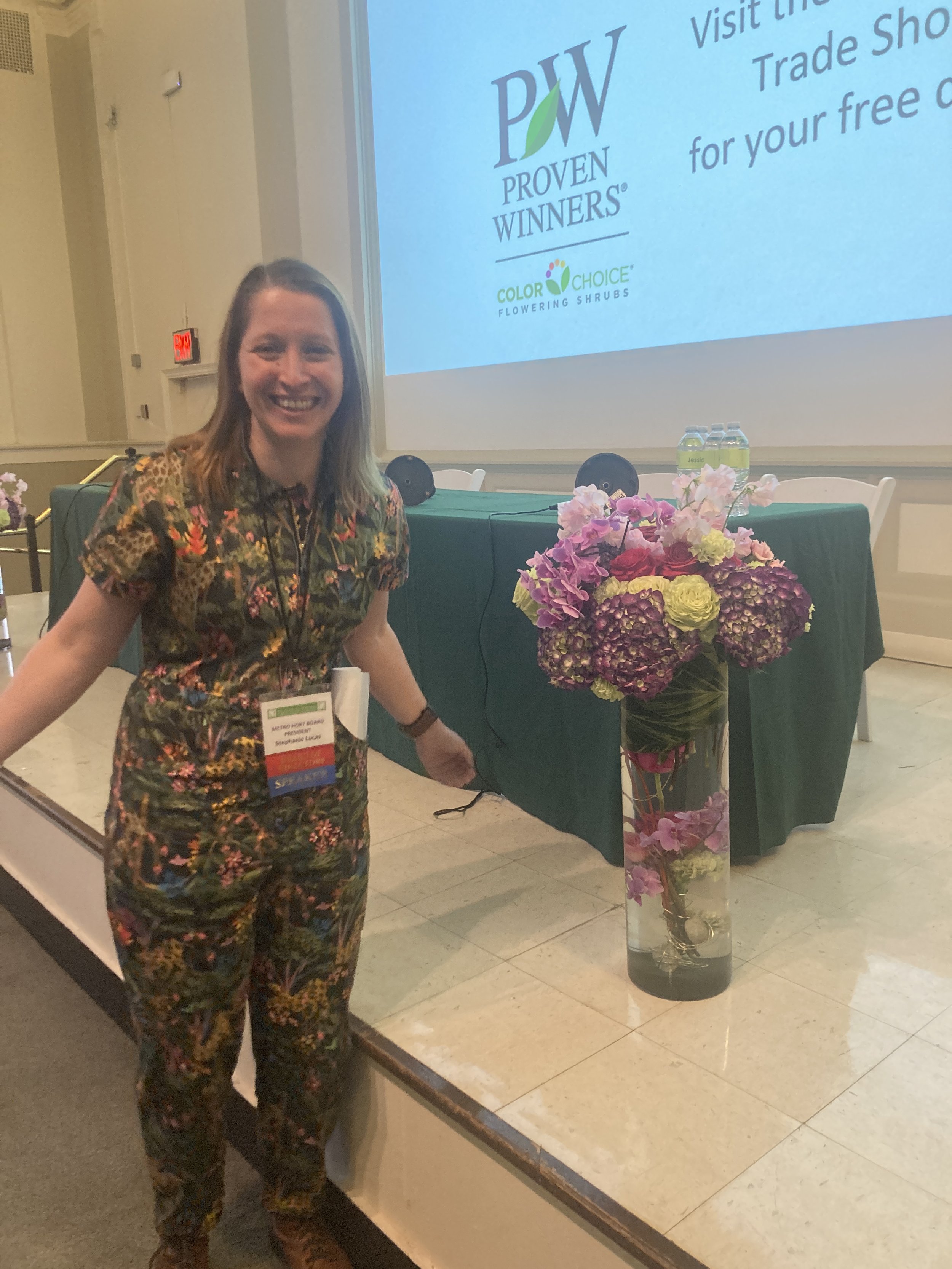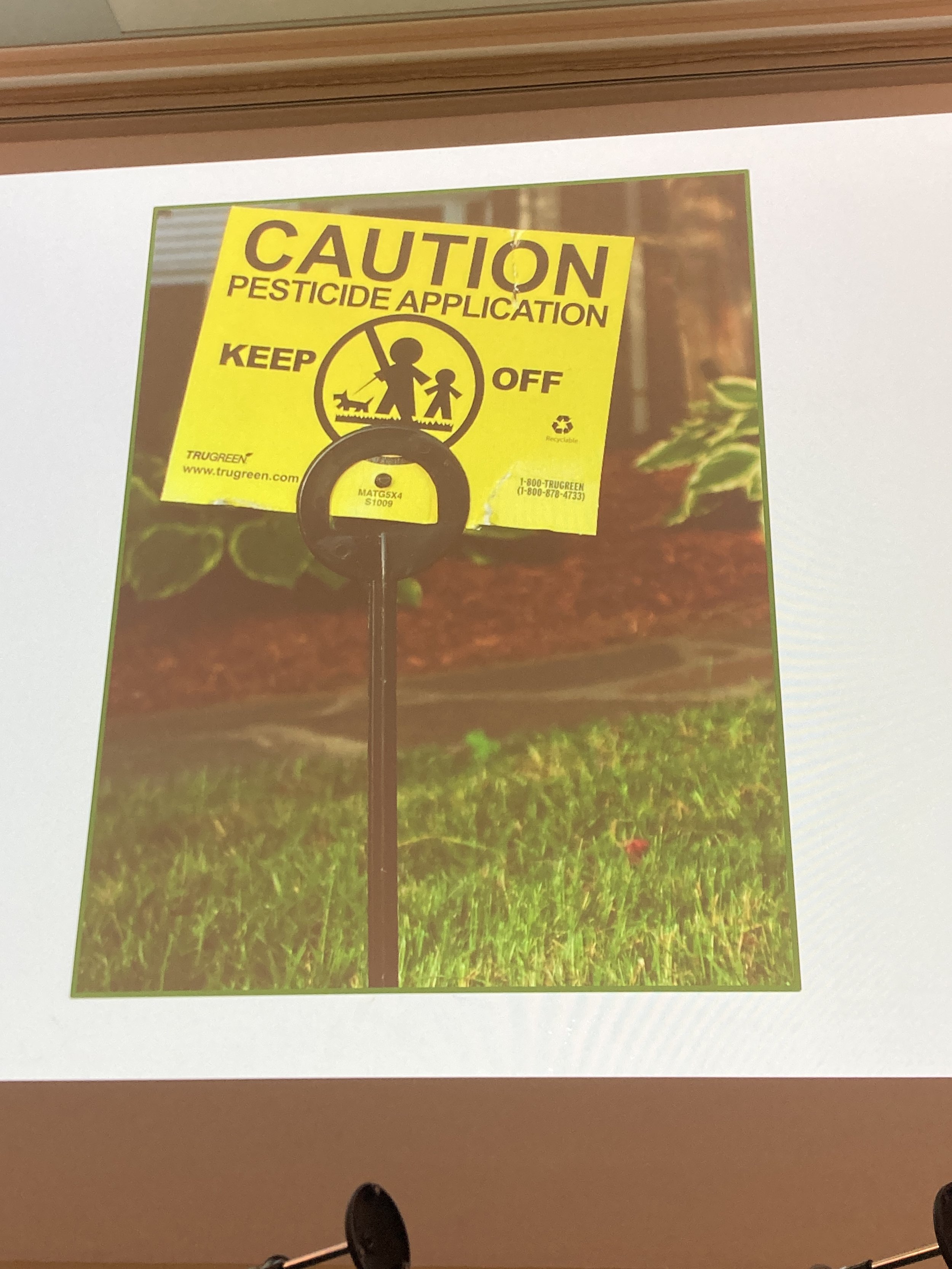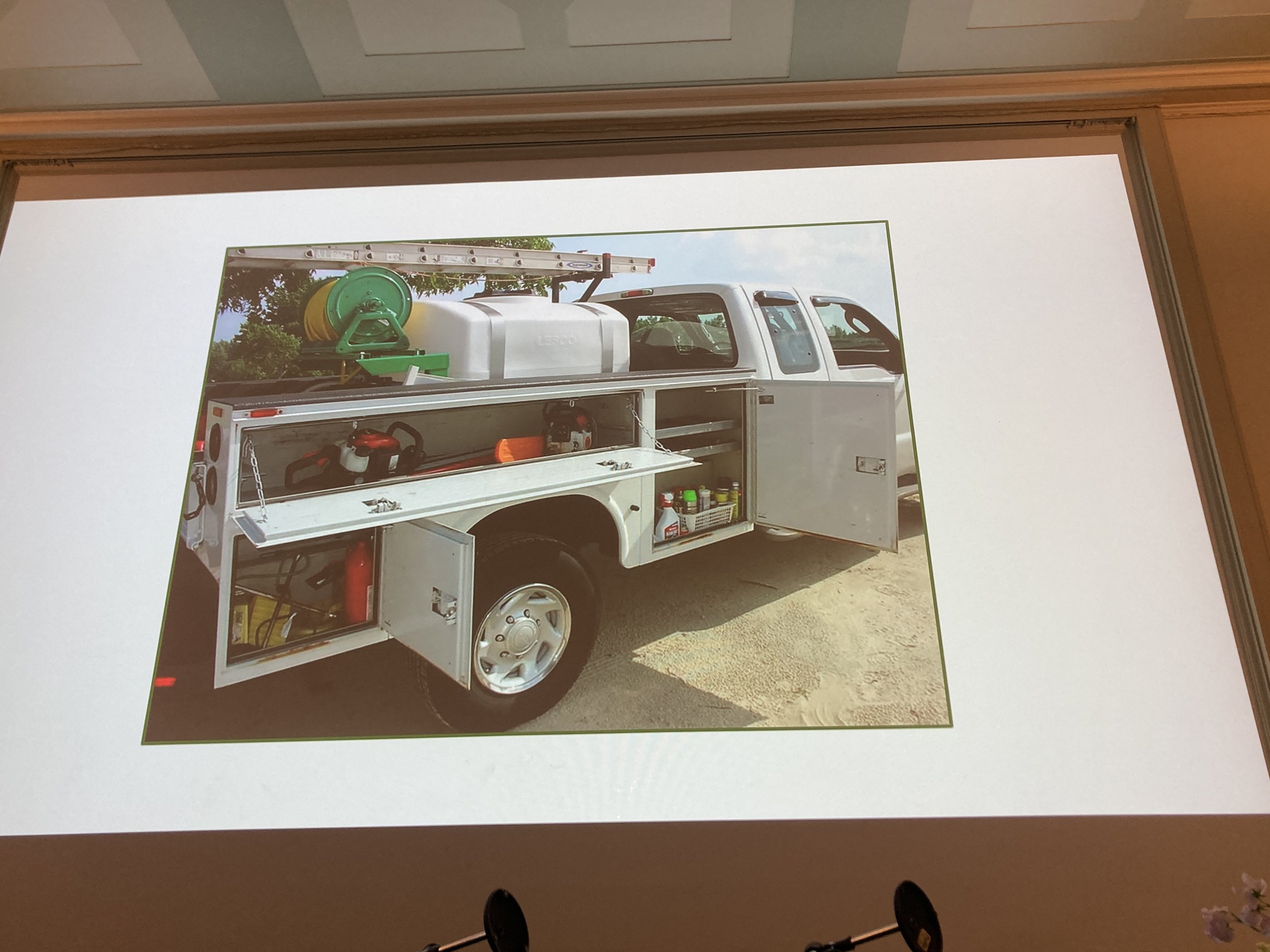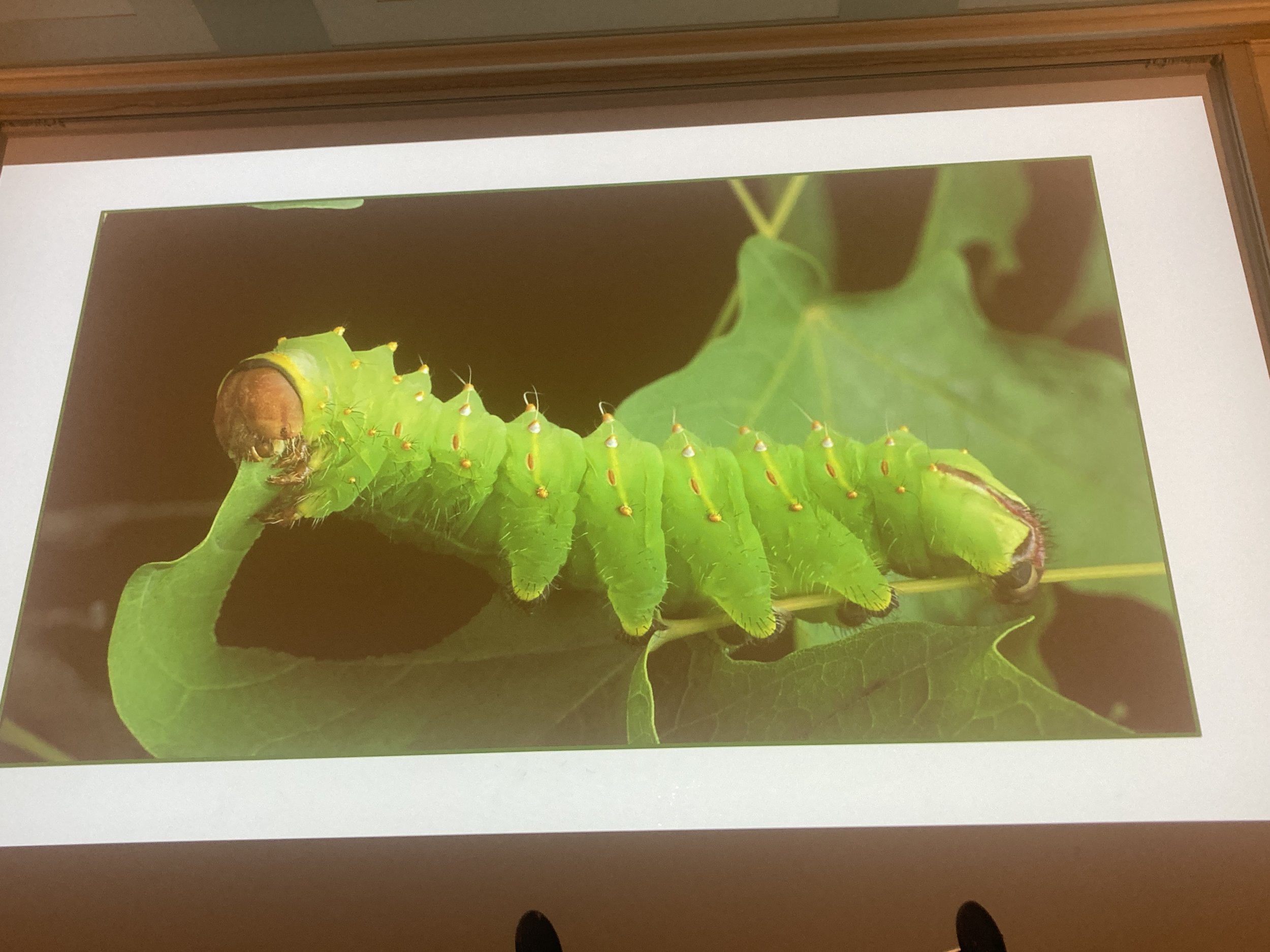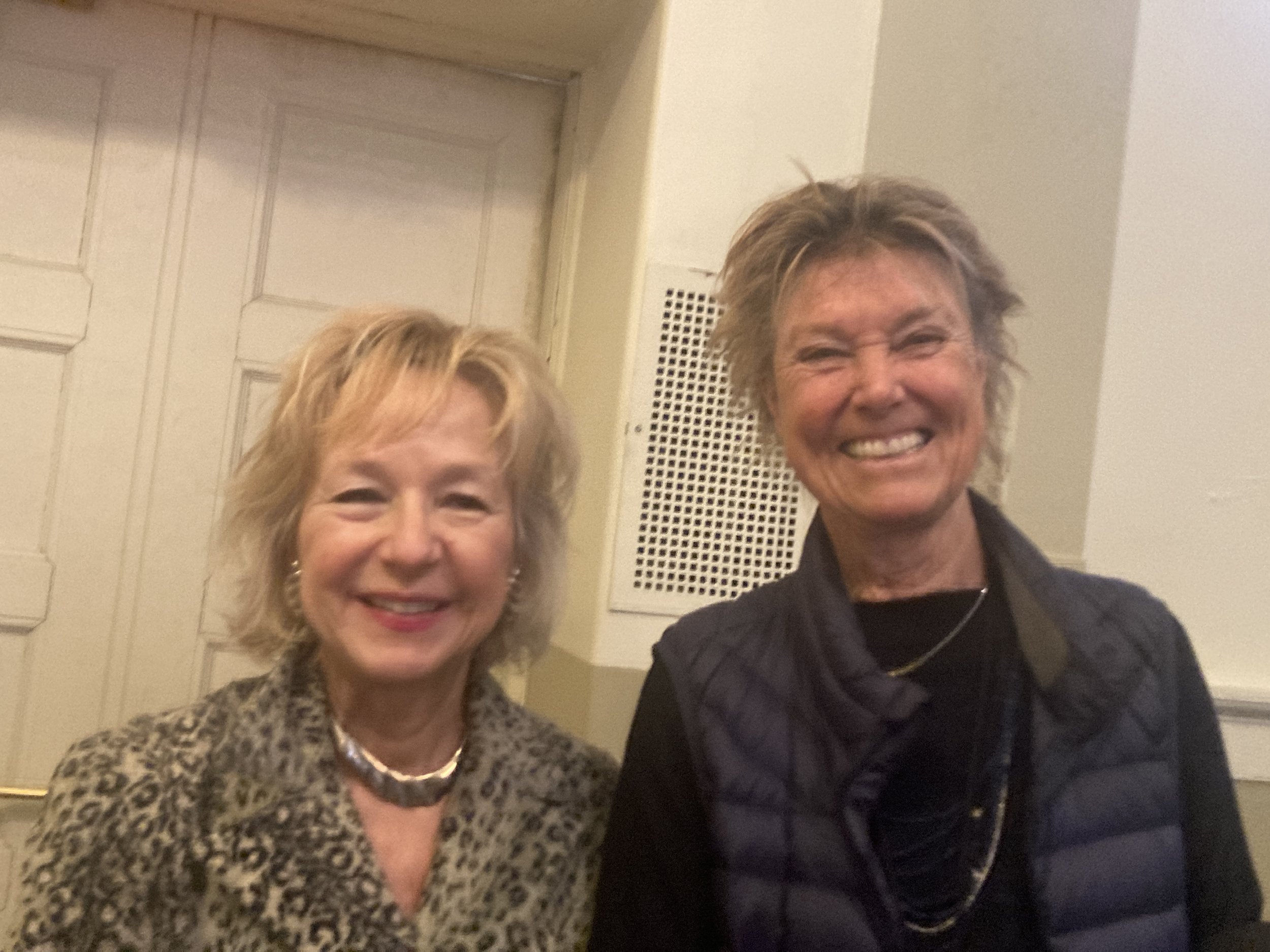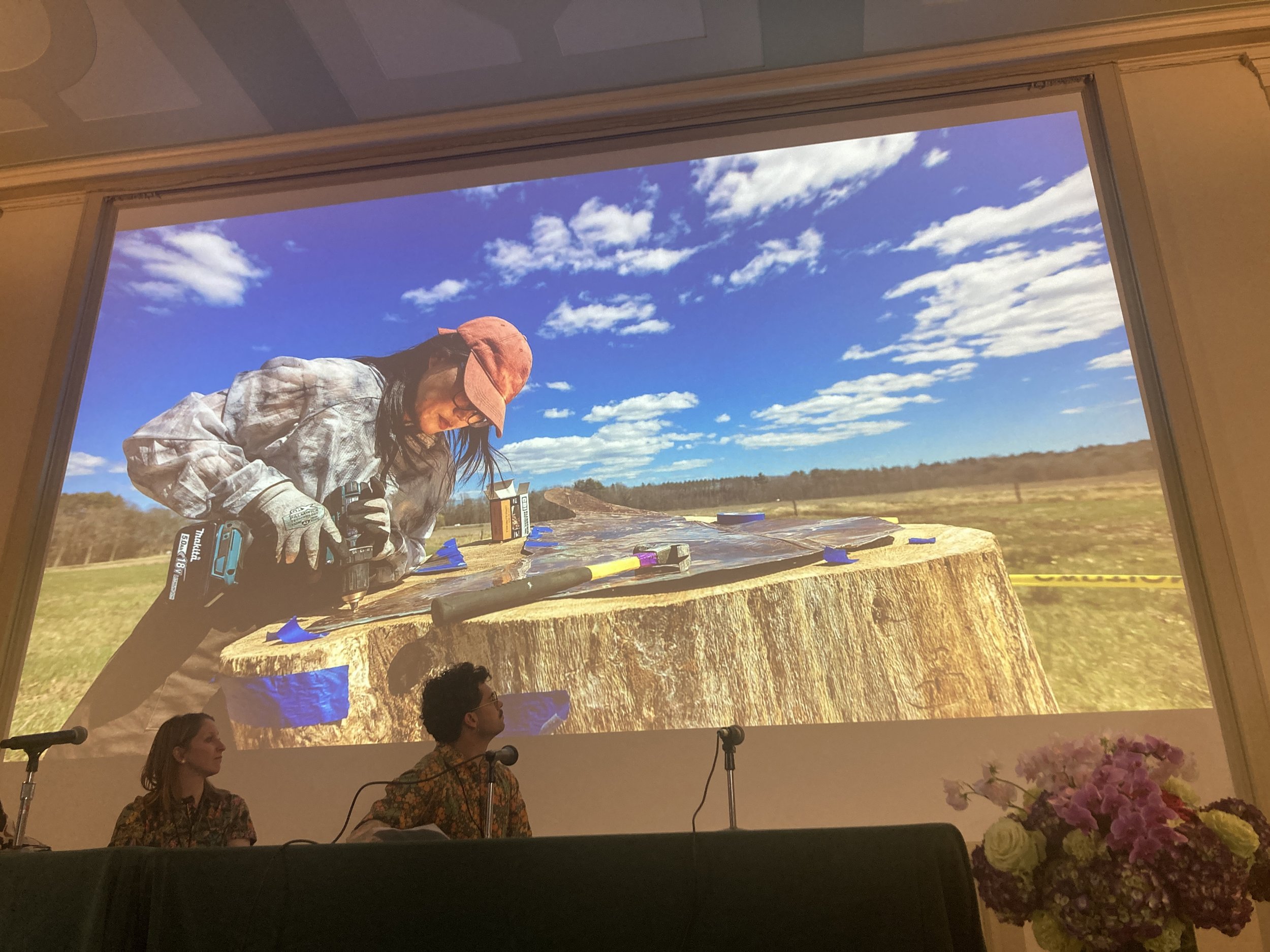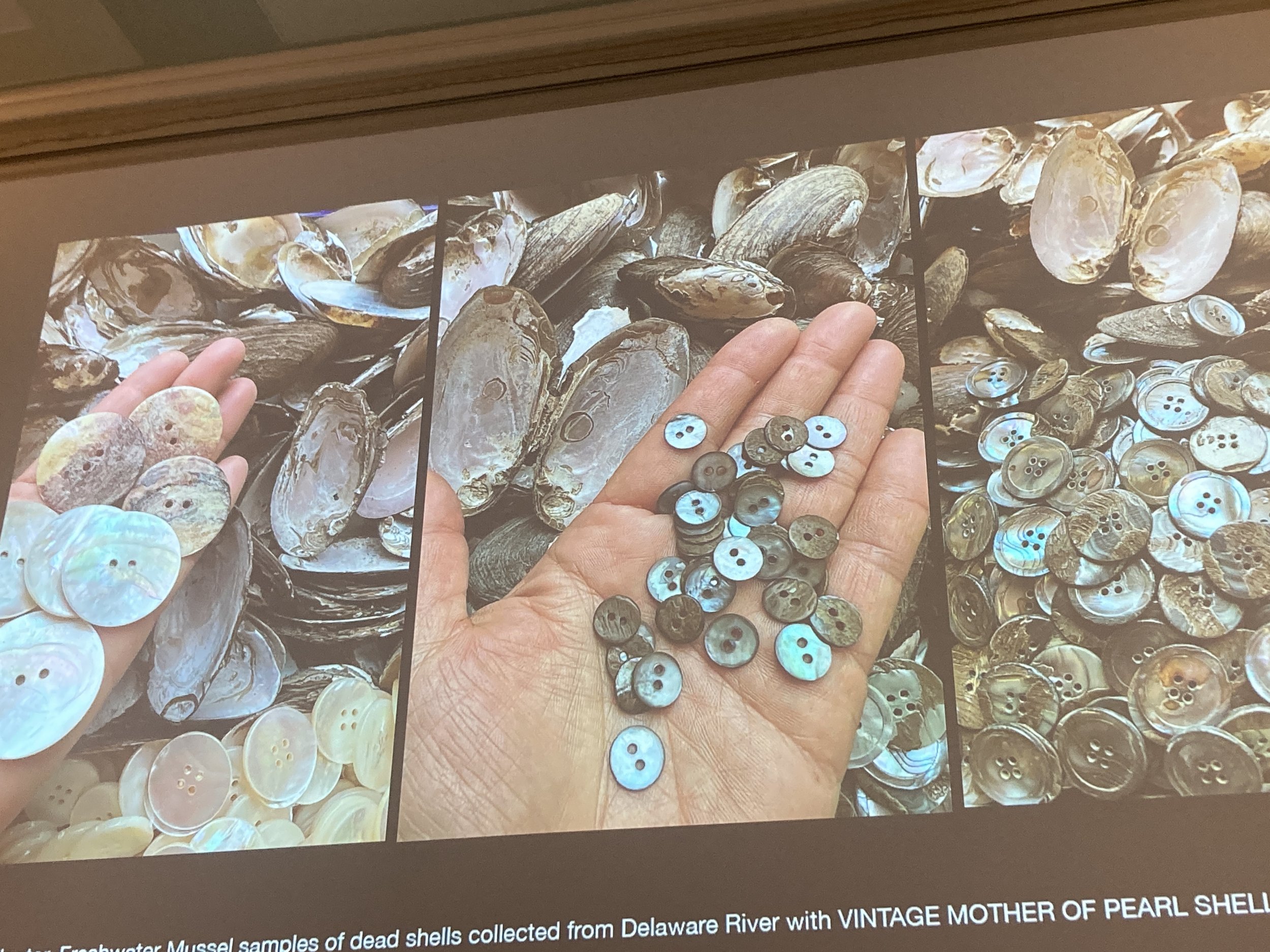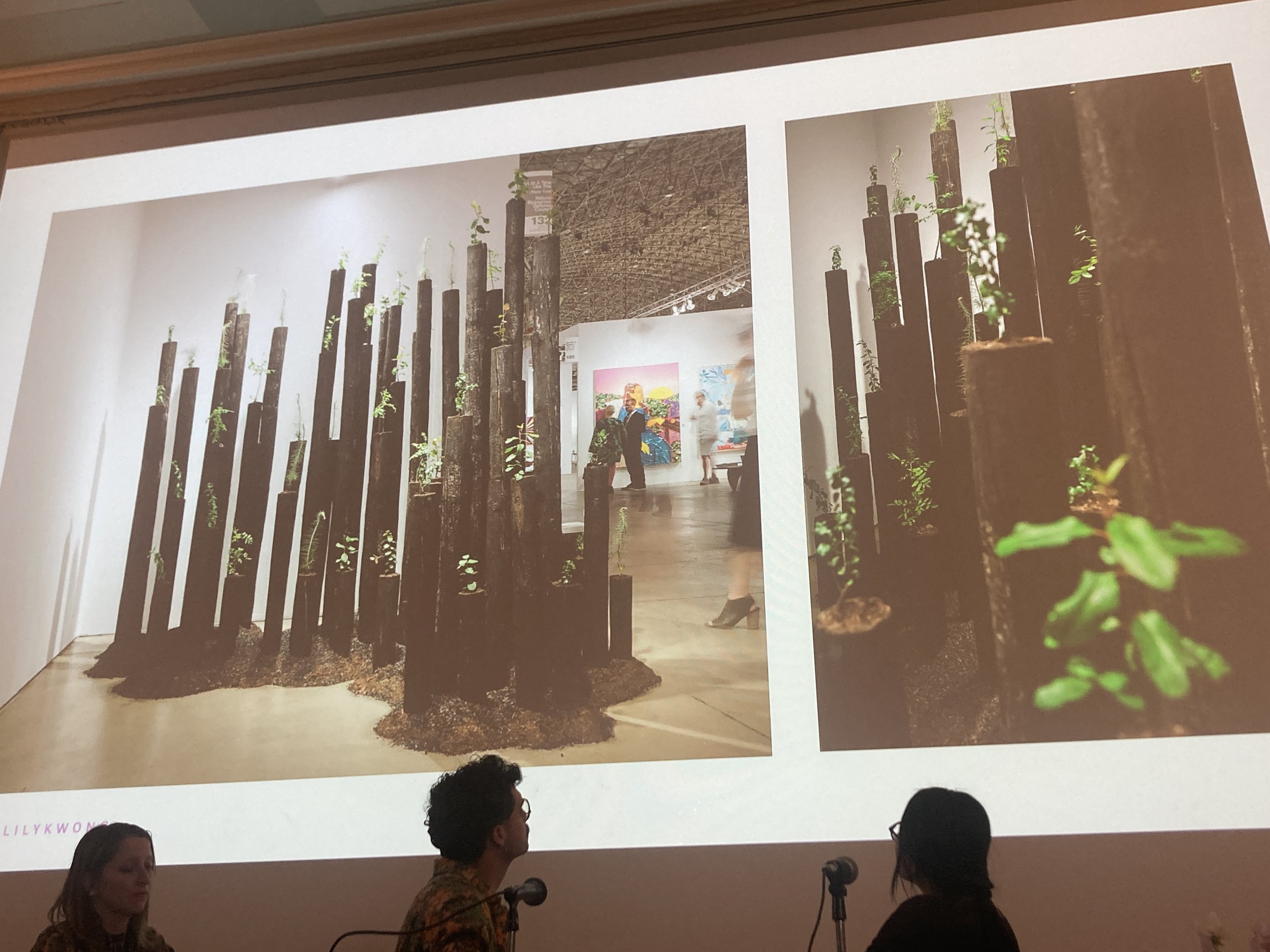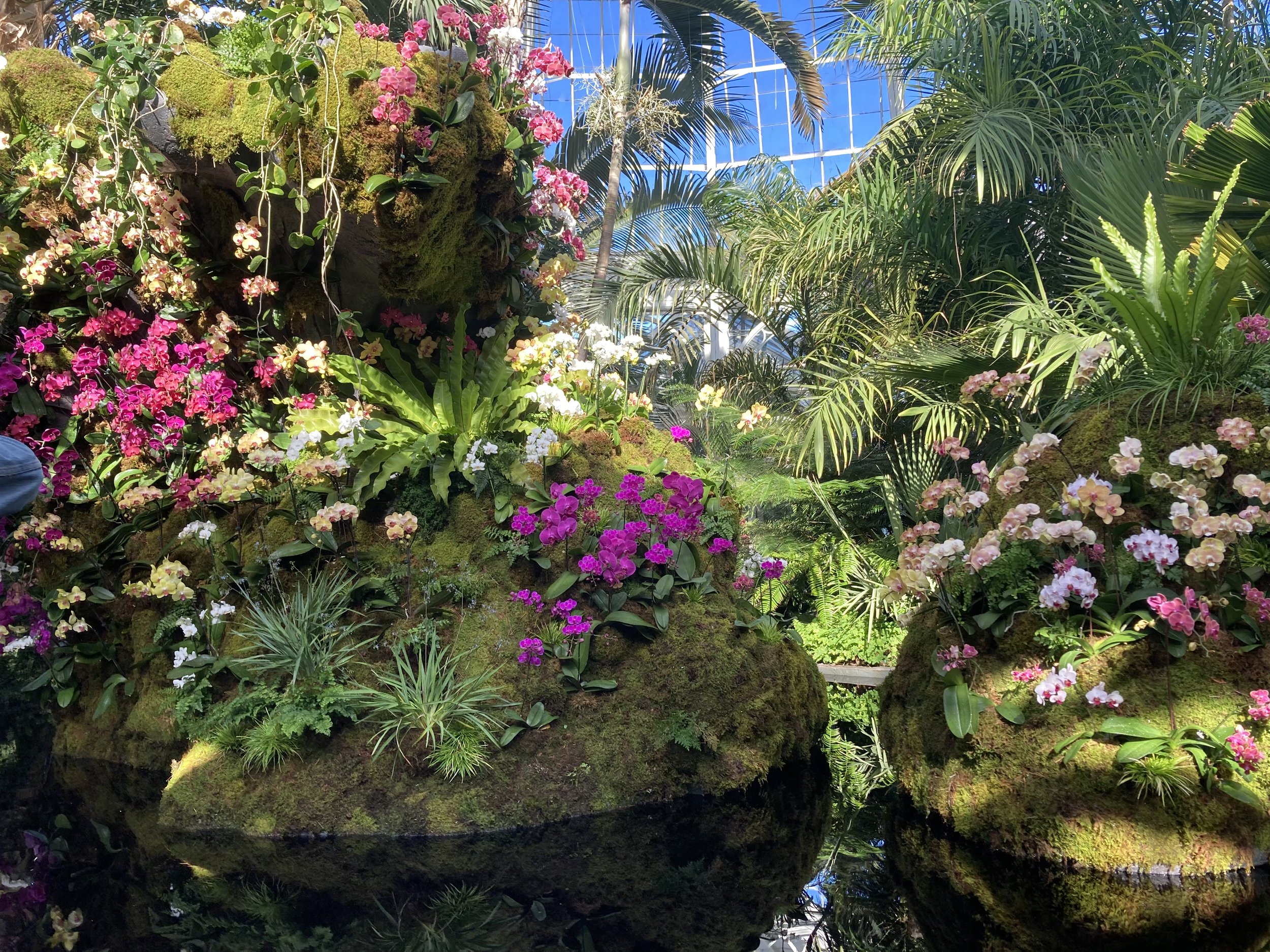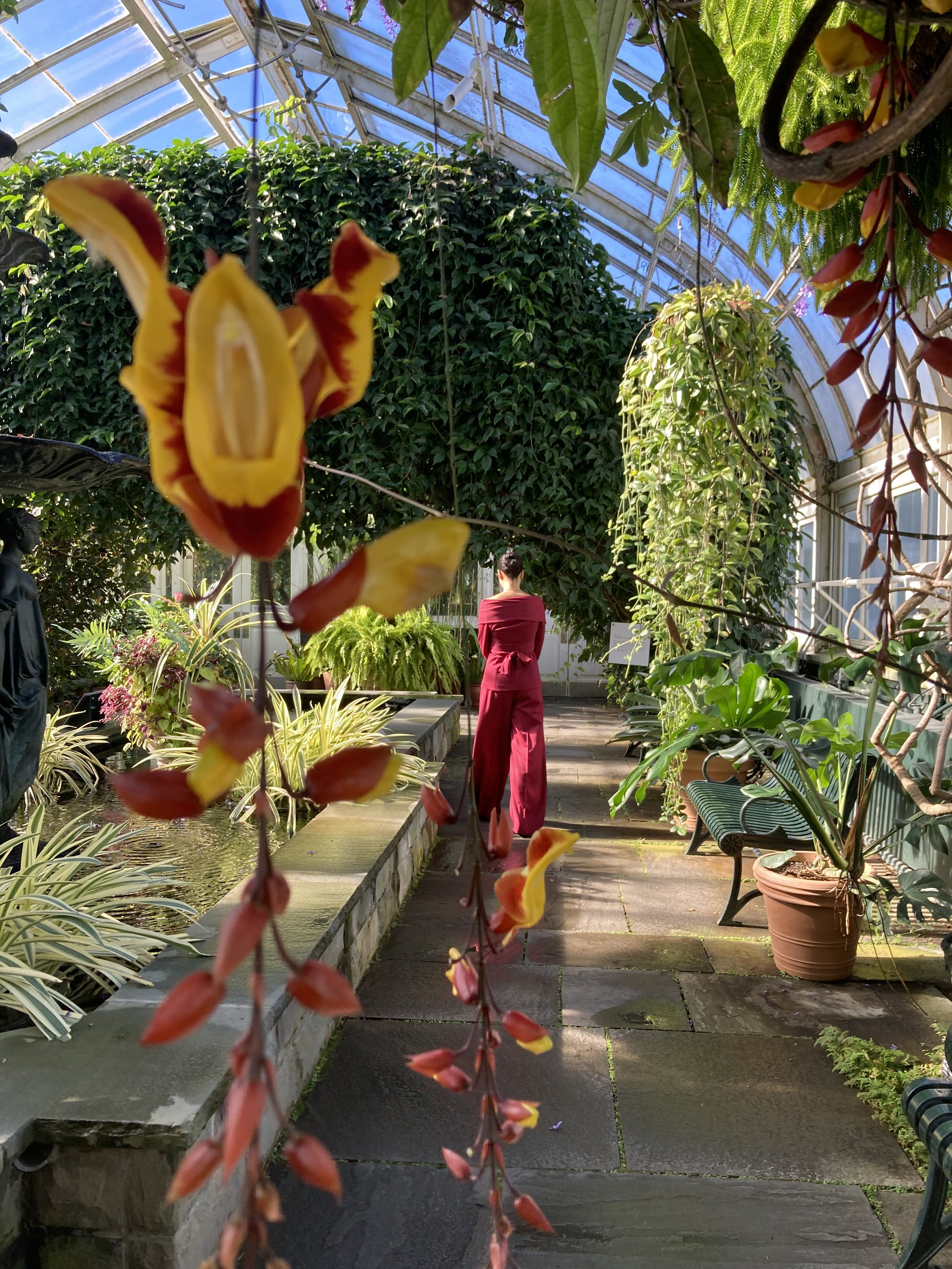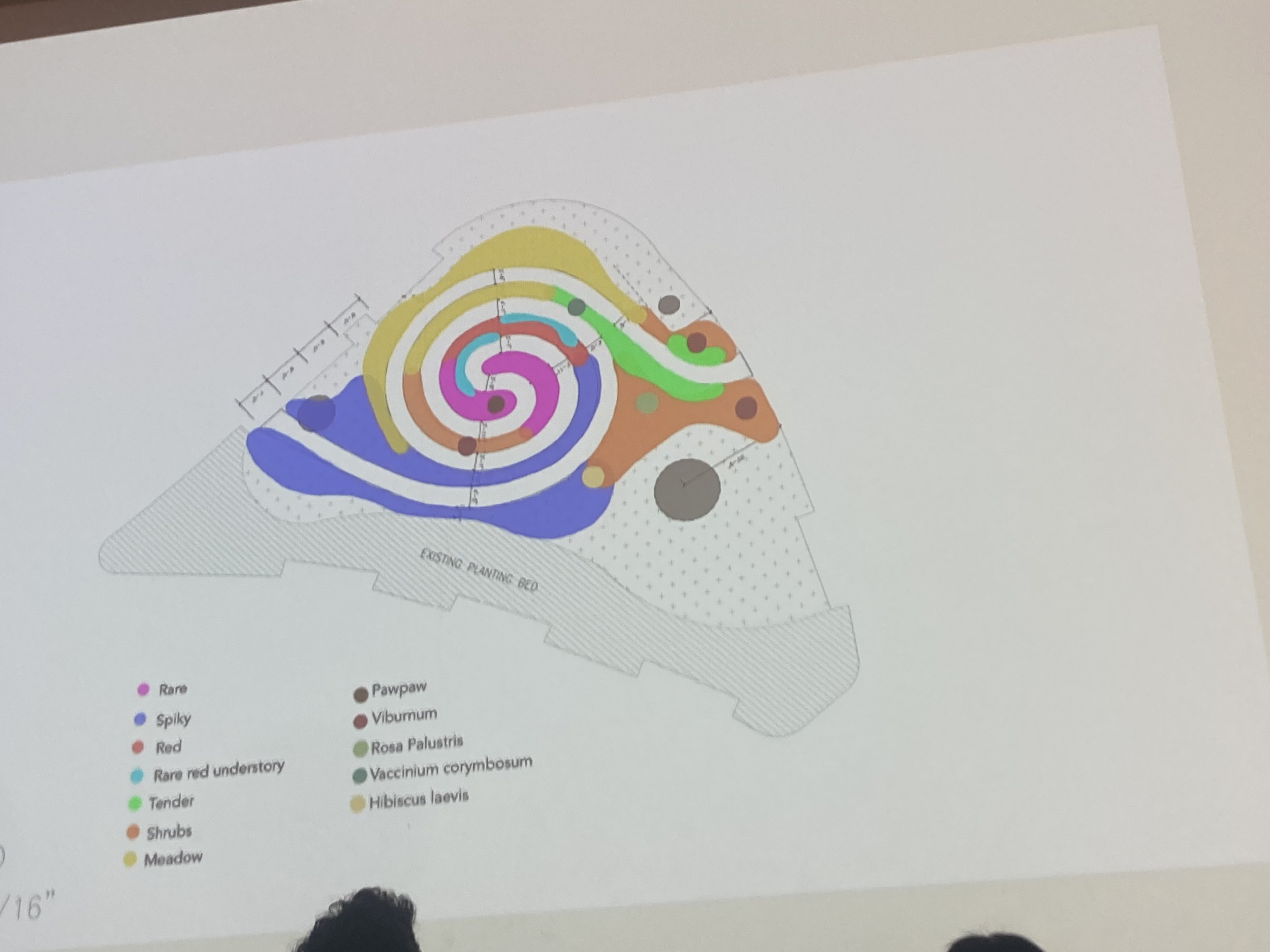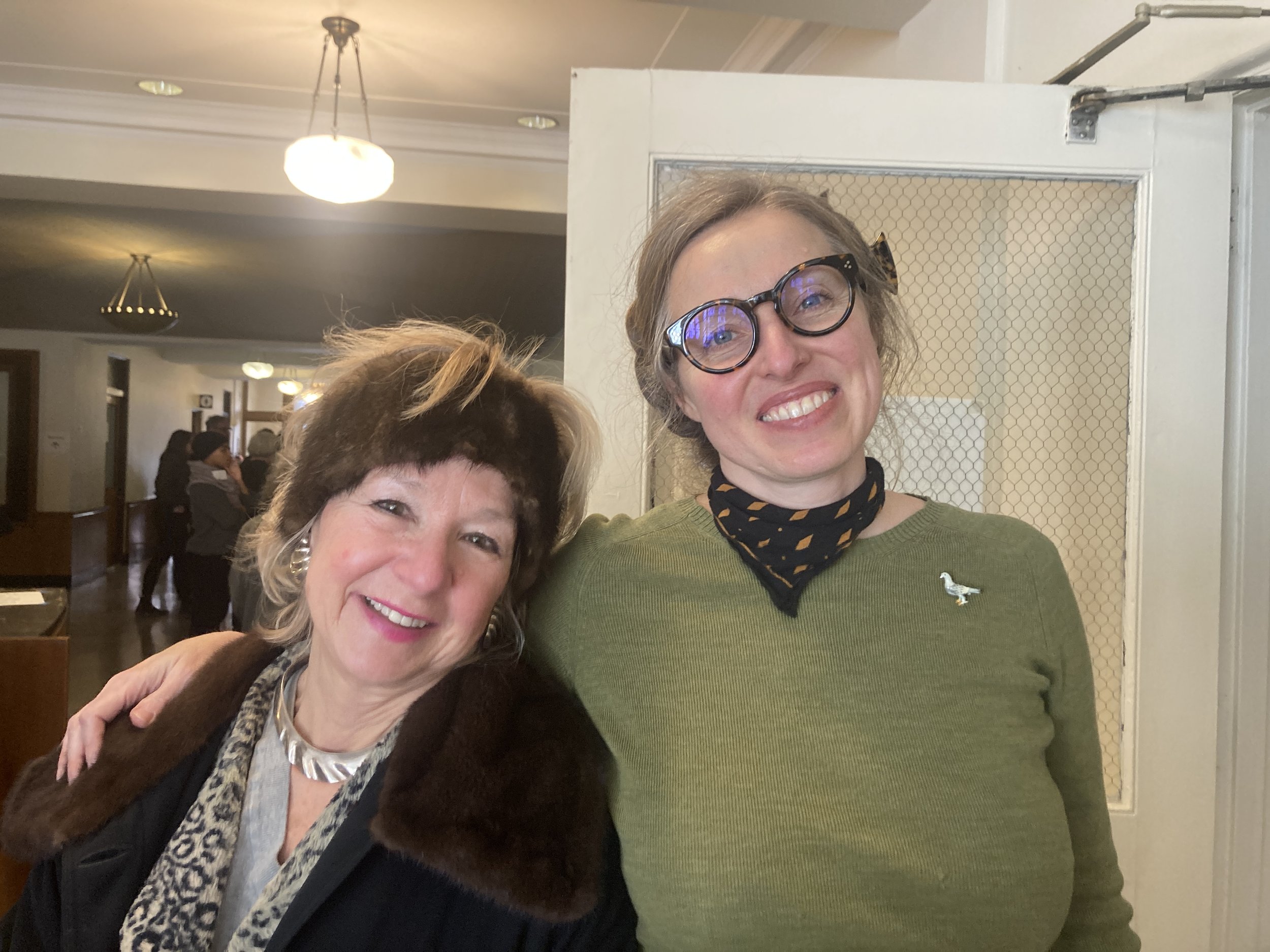Expert Advice on How We Can Embrace Sustainable Gardening & Design Landscapes With Love
I can’t remember a more exciting Plant-O-Rama (POR). There was an unmistakable buzzy vibe of sustainable and “green” goodwill that positively vibrated hope; an abundance of visionary garden cultivation and management that is the essence of horticulture. What was so inspiring and new in the world of plants that had us horticultural professionals so enthusiastic?
Let’s start with this. While the concept of “slow gardening" may, for all intents and purposes, seem redundant ~ after all, great garden design takes time. We all recognize that the plants need to grow, to mature, to create their own kind of serendipitous contribution to the look and to attract their pollinators.
I often quote the citation, Gardening is the slowest of the performing arts ~ a quote attributed to landscape historian Mac Griswold ~ and who I had the joy of first hearing at a Charleston Garden Conversancy lecture back in the last century!
The Garden Art reference was particularly apropos at this year’s POR event for the final talk of the day, “Cultivating Creativity: A Conversation with Artists and Horticulturists” moderated by our Metro Hort president, Stephanie Lucas, who, at the same time, also looked fabulous in her sartorial garden-style “onesie” jumpsuit.
Stephanie Lucas, Director of Horticulture & Park Operations, Madison Square Park Conservancy & Metro Hort Group president
In our hurry-up world of see-it, want-it, get-it Amazon world of fast, fast ~ along with transactional business (and relationships), we must understand that very good garden design and horticulture does not play by these rules.
Delightfully, the keynote speaker, Edwina von Gal, Perfect Earth Project, thoughtfully advocated, advised, I daresay, admonished us to revisit the overwhelming urgency to take responsibility for our land care, and to acknowledge and inculcate Care, Sacrifice, and Responsibility.
Edwina von Gal (photo Robert Maxwell for NY Times)
I’ve longed admired Edwina. In a special place in my home office I keep the paper copy of the 2007 New York Times Magazine feature about her work for Hamptons clients and the ‘launch” of her Earth Project. It is an inspiration. And it shows how Edwina was so ahead of the curve, almost a quarter of a centure ago ~ helping frame the brave new world of sustainable garden design and temporal, terrestrial practices and giving us a new language or way of talking about these forward-thinking conventions.
Edwina’s “take a stand” employs an idiom that is particularly resonant because we are indeed working to “hold our ground against an enemy.”
The enemy is climate change and loss of biodiversity.
And us. Yes. Each of us. And our neighbors.
What do I mean by that, you may ask.
At this stage of my professional horticultural career, I’ve listened to enough lecturers who have talked about these issues on a global scale and/or in a big-picture way.
In contrast, my takeaway from Edwina’s talk was that we all can make a demonstrable difference. It’s on us…
With a garden fairy’s twinkle, and a field marshal’s experience and commitment, Edwina outlined with simple and verifiable examples how we can do this.
There was no sugar coating it. It will take changing habits for some of us.
It’s the harder road for many of us.
I’ll explain.
First, here is how Edwina’s talk was described so you can get the outline of how important this is.
All Together Now: Collective Action in the Face of Climate Change & Biodiversity Loss. Edwina von Gal sounds a call for collective ecological action in the face of our fragile future. If all garden design and land care professionals made a solid commitment to harm-free practices, the consequences could be considerable. What could it look like? Literally, figuratively, ecologically. Why wouldn't we?
Edwina launched her talk with how we horticulture professionals meet our challenges with joy; that we celebrate our landscape.
And while there are global ground rules, each of us needs to establish a benchmark.
We need to design for independence and to maintain the gardens for resilience.
And that holds true if you are a homeowner doing your own gardens or employing landscape pros.
The byword is do not employ/use harmful practices.
And in a very real way, that could require you to make a sacrifice ~ or at the very least, to change the way things have been done.
For professionals, that may mean you cannot look the other way when reconciling to use Roundup or other ground killer “just this once” to create a meadow or new design.
I belong to professional organizations where members have stated this excuse as business expediency. Edwina asks us to rethink this way of operating. We are the leaders, after all.
It will take time. If you are a professional, you will need to educate your clients.
If you are the homeowner, that means you can think about your yard as a living habitat ~ a true “living room” rather than recreating an image from a magazine. Or a postcard from a bygone era.
Adopting sustainable gardening leads to healthy practices that include not having your yard or lawn sprayed for ‘bugs’ or other critters.
“We can’t kill our way to a healthy life,” Edwina opines.
If having that green, green grass means your pets or children need to stay off it because of the chemicals, then what’s the point??
If you spray, you will lose insects. But do you know how those insects help the environment overall?
She suggests that if you have a pest problem ~ whether insect or animal ~ you most likely have a predator problem.
If we’ve eliminated the creature that helps keep others in check, we need to restore that balance.
In line with this, I counseled a recent client who complained of ants and was going to have her yard and home sprayed as the exterminator recommended. After reviewing her yard and plants, I instead, suggested that she had an aphid “issue.” See, ants and aphids have a mutually beneficial relationship. They’ve been a duo for ecological eons. Ants even carry aphids to new plants ^:^ By understanding the life around her, the client was able to manage her plants’ health and her family’s ~ and save money on the killing/extermination.
In a similar way, in some of my previous posts, I’ve noted that we are one of the few, if not the only, yard on our block that boasts fireflies ~ because we don’t use chemicals.
And we leave the leaves in autumn so that critters can hibernate and grow and reproduce. And it’s great, natural mulch.
As a designer, I’ll add, when you’re using purchased mulch, ask for natural brown; not dyed black or god forbid, red mulch. The dye is, understandably, bad for the habitat.
And for the love of St. Francis, do not allow your landscape crew to create “volcanoes” around your tree trunks.
Edwina calls this display, the “Toilet Plunger look.” A most apt albeit dismaying practice.
I know the botanical gardens’ education teams have tried mightily to educate the “Mow, Blow, & Go” businesses to not do this because it’s bad for the trees. I too have incorporated this advice/ warning in my own garden talks. And yet, one sees them most everywhere…
The mulch volcanoes will not allow airflow which leads to bark and root rot; stem girdling, and will heat up the area, retain moisture and further, encourage pathogens and rodents and disease to breed.
Edwina told us that she asked some maintenance crews why they did it and they told her that the homeowners asked them to in order to “keep up with the neighbors.” Sigh.
Who's leading this parade?? 🙃
A case of monkey see/monkey do.
So now you know ~ don’t do. 😀
Maintainance for design-dependent gardens :(
Getting back to the spraying issue, I’ll share that we have one neighbor in particular who, even though the homeowner doesn’t spend any time in the yard, has employed companies to spray the lawn for mosquitoes and ~ in hazmat suits!! One year, I had to run out to stop them from coming close to our side and our herb garden.
Jumping ahead a bit here, I asked Edwina during the Q&A session, how to employ her methods with neighbors who are oblivious to the issues.
She advised a kind of block party conversation to encourage a dialogue about the harm to children and to pets. If only that could work in our situation…
If you have any tips on how to get folks who have dug in their heels (vs. digging in plants), please share..
Edwina said we should all be thinking about how we can help a place to heal, grow, & protect itself ~ naturally.
If your lawn has clover ~ so what?!
She warmed our hearts with her nephew’s observation that the middle of the word C”LOVE”R is LOVE…
See how things can be reimagined?
She went on to emphasize: “Don’t foster a killing cycle. If you don’t know what it is ~ don’t kill it!” She added, “It’s our biome, too.”
Edwina outlined how we need to design our gardens for relationships.
That means we should veer away from garden designs that don’t embrace and respect a recognition for the entire habitat: animal, plant, and other organisms. Think seriously about how the plants, the season, and pollinators work in harmony ~ we should all aim to provide a safe habitat for all creatures. (No excuses).
Nature doesn’t like a monoculture.
We need to maximize diversity ~ and that includes us humans.
Let’s share the land with other life forms.
We have Habitat Loss simply because we aren't willing to share..
Edwina showed and encouraged us to think about how nature shares; how, for example, trees evolved with caterpillars.
In turn, the caterpillars are food for birds who need a food source within a quarter mile of their nests.
Bear in mind that Landscape Design is a process. When planting, she encouraged us to think about how it adds to the food chain. For example, Viburnums and Serviceberry, Amelanchier arborea, are great trees/shrubs to have on your property.
Speaking of life cycles, Edwina also showed us the importance and artful opportunities to be found in decaying and dead trees.
Many animals and birds and insects use decaying trees so don’t be so quick to have them taken down and/or hauled away.
And if you see woodpecker spots, that can be a good thing because they are building habitat. They drill holes for bees; keep insects in check.
As a designer, I’ll add to monitor those decaying trees that woodpeckers take up residence in. If the tree is large and near your home, you want to safeguard its integrity and not have a toppling tree on the house.
On a smart, whimsical note, she shared how John Little, a British designer and horticulturist, goes so far as to hang seed heads on “planted” former telegraph poles to help create biodiversity habitat.
She showed us a design element to employ if a tree must come down, we can use the remains for Log walls, and “Dead” Hedges and stepping stones.
Edwina says if a plant is healthy, keep it. If it dies, let it go with grace.
Say “no” to design dependency. This means that if keeping a plant or lawn alive takes an abundance of chemical care or they take and use an exorbitant amount of water and are so precious that you hurt other nearby plants and wildlife, it’s time to consider letting it go…
Edwina urges a focus on highly productive plants vs. a strict adherence to natives.
I’ve been hearing more and more of this in horticultural circles.
Edwina explains that productive plants are those that ask very little; but give a lot.
Her mantra is to help us foster a new language to better communicate and embrace the urgent need for better landscape design.
Think of repositioning how we approach landscapes and garden design from that is one about products ~ certain plants or looks ~ to process. Let nature do her thing a bit more. Your garden is not your living room, she playfully, albeit seriously, referenced..
Some of the new practices may make us uncomfortable.
Pursuit of true landscape design may require us to make difficult choices because we may have to “wait” for growth or decay or…
But the alternative is essentially what she and Dan Kiley refer to as creating a “Dead Landscape.”
I daresay you don’t want that.
Edwina encourages us to know our land, and to work with it ~ not against it.
In the end, she added, “Nature doesn’t do ugly.
Make everything irresistibly beautiful. Look at what’s out there.”
Edwina von Gal is a leader, influencer, visionary that we very much need now. More than ever.
After the lecture when my hortie friend, Lynn and I scooted to extend our sincere thanks and praise to Edwina, I learned that Melissa Ozawa, a garden writer I’ve long admired and had the joy of working with at publications including House & Garden and Martha Stewart Living, works for Edwina. Oh, happy day!
The Artists were the stars of the afternoon POR seminar presentations and it was superb. As you know already, (I hope!) I have always pursued gardens in an artful manner. Garden Art is profoundly natural, to my way of looking at an oeuvre that has its own history, culture, and style. “The creation of beauty is art” the Emerson quote I place at the header here on my blog.
To put the POR art talk into context for you, the description summary was that this was to be a talk about how art and horticulture can form meaningful connections that inspire. Perhaps more importantly than ever, artists and horticulturists are working together at the forefront of making the natural world and sustainability efforts accessible to common audiences.
Moderated by Stephanie Lucas, Madison Square Park Conservancy, and our Metro Hort president.
Panelists: Patrick Costello, 2024 BBG Performing Artist in Residence;
Lily Kwong, Landscape Artist, Urban Edenist & Founder of STUDIO LILY KWONG & Freedom Gardens.
The presentation showcased each of the artists who spoke about their designs, their inspiration, and their artful creations, often featuring an intersection of detritus, composting, plants, recycling, cultural consciousness, and beauty.
Their artworks had the audience gasping, taking in their audacious, innovative, creative looks, and the scale and scope of their, by and large, public works.
Some highlights are: Shin’s “Floating MAIZE” plastic Mountain Dew bottles, mounted at Brookfield Place, as a cornfield, with a wink to highlight industrial agriculture and the use of the highest concentration of corn fructose in a drink.
Shin’s Allée Gathering, Storm King’s Dining Table created from felled maple trees is simply genius.
As is her Freshwater commission for the Philadelphia Contemporary.
I am still gobsmacked by Shin’s interpretation of the freshwater river mussel and its relationship to a healthy ecosystem. Like oysters, these bivalves clean rivers and deposit nutrients into the soils.
Did you know mussels can live for more than 80 years? Or that they were the source of the Pearl Button industry that pretty much obliterated the creatures…
I didn’t.
Shin’s public art takes you on a fascinating exploration of nature, restoration, history…
I’ve breathlessly admired Lily Kwong’s garden designs since I was introduced to her first on Zoom, courtesy of The Garden Conservancy member’s lecture and later, in person, at The New York Botanical Garden’s Orchid Show in 2023.
In my opinion, her ravishing, exuberant, stunning designs for that show, brought back the majesty and magic to NYBG’s Orchid Show. Please enjoy my review of her show designs, the cultural connection to her Chinese heritage, and the medicinal qualities of orchids. Her grandfather helped open the market in Australia for medicinal orchids.
(One of my favorite pearls from the show was learning that in Victorian times, women weren’t “allowed” to have orchids because they were regarded as too erotic and too sensual for them to bear!)
At the POR presentation, Lily (how perfect is her name for a garden designer?!) showed some of her design portfolio from her large-scale urban projects, including the High Line, Summer in Winter in TriBeCa, the Crosby Hotel and her work in Los Angeles, her home... Lily addressed the Mother Fire plant adaptations and the Burnt landscape. Lily spoke of seed regeneration and new life…
Very preliminary design rendering!
On a happier note, lucky New Yorkers and visitors will be able to experience a new Lily Kwong design. We learned that Lily has been commissioned by Madison Square Park’s Stephanie Lucas to collaborate on a new meditative and children’s garden installation, slated for a May launch.
This is going to be phenomenal. Can’t wait.
For you, dear readers, I hope I have captured your interest and inspired you with these garden messages and wise entreaties for a greener, healthier, and more beautiful world of gardens and garden art.
True Garden Glamour is our best hope to protect our environment, eat better, and luxuriate in gardens that are designed thoughtfully and brimming with love…
Thank you Metro Hort.
Metro Hort Group’s POR symposium, trade show & career fair for Horticulture Professionals is our largest program of the year attracting close to 1,000 gardeners, designers, arborists, and educators working in public parks, botanical gardens, and private Edens in the New York City Tri-State region.
If you are a horticultural professional, you should consider joining our organization. Membership has its privileges. (wink!)
Plus, you will enjoy a great community and bonhomie.
My beautiful Hort friends: Lynn & Charles (I’m in the middle)
Me & Rebecca McMackin, leader in ecological Horticulture, TED talker, LOEB Fellow & …



